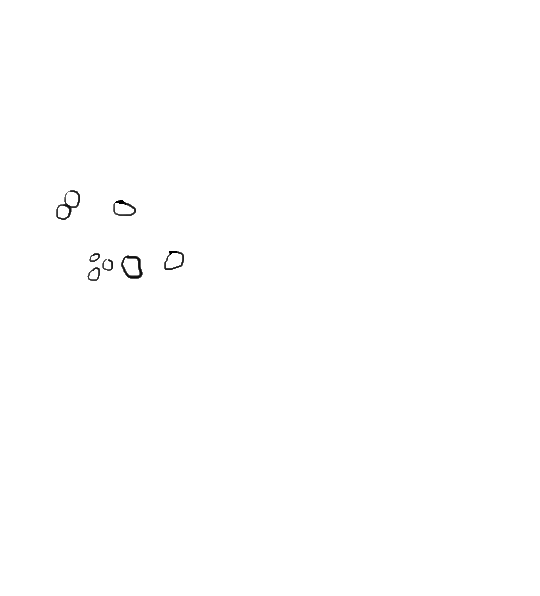
The reference male liver (upper image) has an overall monochromic aspect. The size of the hepatocytes ranges up to 10 µm, and hepatocyte cytoplasm stains mixed eosinophilic / basophilic. These cells also contain chromophobic regions, indicating glycogen storage. The size of these glycogen containing compartments vary with nutritional status, and is relatively small in this specimen. The capillary diameters match the size of the erythrocytes.

adult male zebrafish upper image, reference; lower image, 10 ng/l ethynylestradiol (EE2), 24d; H&E staining. Study by Kris van den Belt, VITO Belgium 1.
In female liver, or, as shown here in male liver after exposure to an estrogen analogon (in this case ethynylestradiol), the hepatocyte cytoplasm is basophilic, indicating a high mRNA content. This hepatocyte basophilia coincides with high plasma vitellogenin levels, indicating active vitellogenin synthesis in the liver. In exposed males, the capillaries (and other vessels) are dilated and filled with eosinophilic plasma, indicative of a high protein (vitellogenin) content.
Reference
- van den Belt-K, Wester-PW, van der Ven-LTM, Verheyen-R, and Witters-H. Time-dependent effects of ethynylestradiol on the reproductive physiology in zebrafish (Danio rerio). Environ Toxicol Chem 2002;21:767-775.
vitellogenesis in the liver - detail

The reference male liver (upper image) has an overall monochromic aspect. The size of the hepatocytes ranges up to 10 µm, and hepatocyte cytoplasm stains mixed eosinophilic / basophilic. These cells also contain chromophobic regions, indicating glycogen storage. The size of these glycogen containing compartments vary with nutritional status, and is relatively small in this specimen. The capillary diameters match the size of the erythrocytes. The basophilic staining in hepatocytes, which is produced after estrogenic exposure, is found diffusely distributed in the cytoplasm
 , but also condensed in specific cytosolic regions
, but also condensed in specific cytosolic regions . This distributions is suggestive of the formation of complexes of mRNA and proteins destined to be secreted, which are directed to the endoplasmatic reticulum (ER). Note the blood vessel
. This distributions is suggestive of the formation of complexes of mRNA and proteins destined to be secreted, which are directed to the endoplasmatic reticulum (ER). Note the blood vessel , overfilled with eosinophilic plasma. Hepatocytes of unexposed control males are filled with unstained glycogen storage granules
, overfilled with eosinophilic plasma. Hepatocytes of unexposed control males are filled with unstained glycogen storage granules .
. Vitellogenin immunostaining in hepatocytes is confined to a perinuclear region
 , suggestive of the ER / Golgi apparatus; this localisation precedes secretion to extracellular locations
, suggestive of the ER / Golgi apparatus; this localisation precedes secretion to extracellular locations , problably the space of Disse.
, problably the space of Disse.
There is no vitellogenin immunostaining in the control unexposed male.